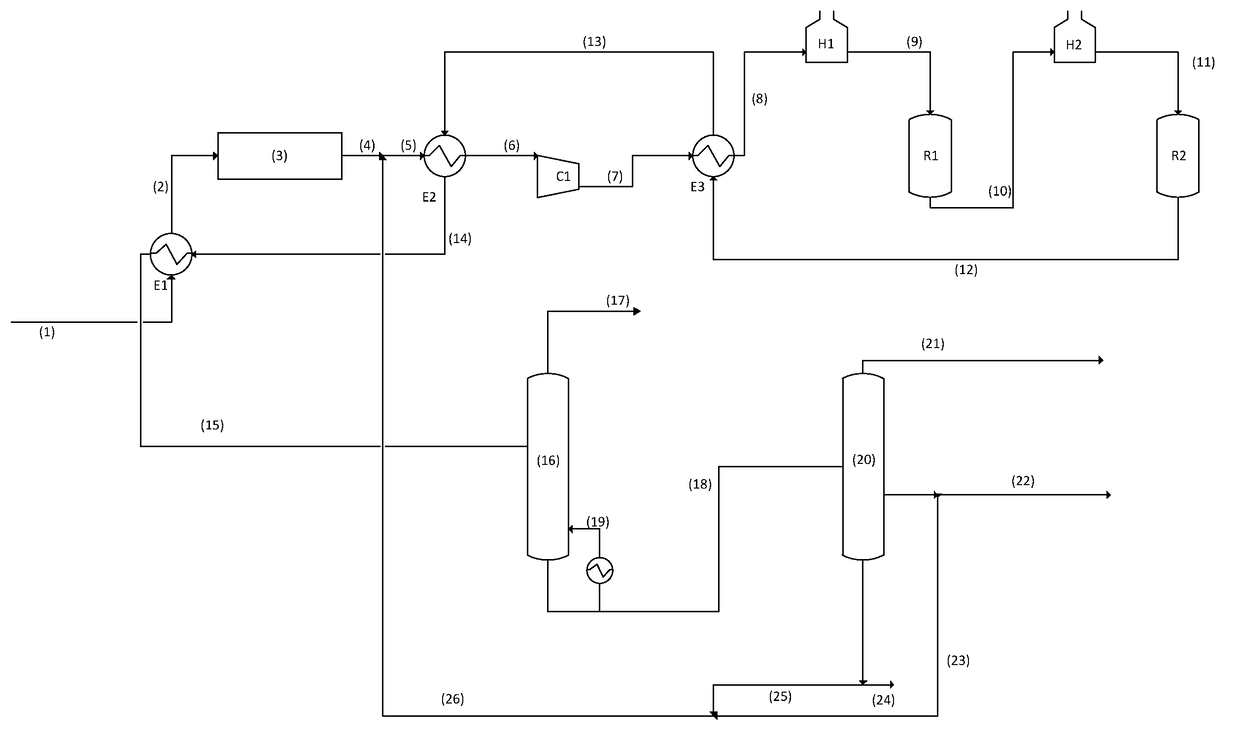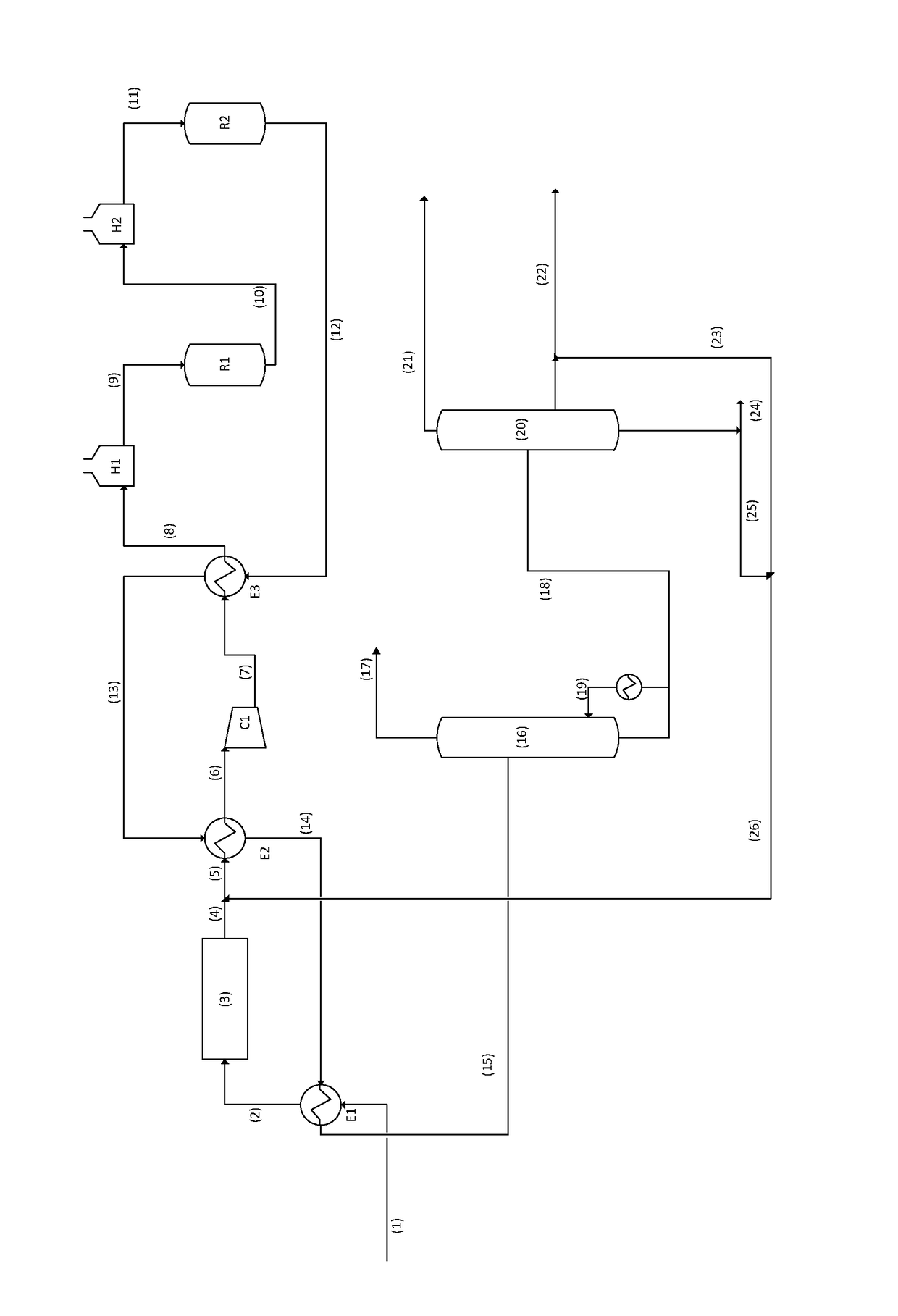Process for dehydration of ethanol to ethylene at low energy consumption
a technology of ethanol and ethylene, which is applied in the direction of ether preparation, hydrocarbon preparation catalysts, and compound dehydration of ether, can solve the problems of reducing the selectivity of ethylene produced by the reaction, and application does not address the problem of maximizing heat, so as to increase the selectivity of ethylene
- Summary
- Abstract
- Description
- Claims
- Application Information
AI Technical Summary
Benefits of technology
Problems solved by technology
Method used
Image
Examples
example 1
According to the Invention
[0114]Example 1 illustrates a process according to the invention.
[0115]The ethanol feedstock under consideration is produced by fermentation of wheat, without extraction of glutens, by a process of the dry milling type.
Step a)
[0116]Said ethanol feedstock is introduced, at a flow rate of 45,664 kg / h, into an exchanger E1 at a pressure equal to 1.15 MPa and is heated, remaining in the liquid phase, to a temperature of 120° C. against the effluent from the last adiabatic reactor of step e).
Step b)
[0117]The heated ethanol feedstock is pretreated on TA801 resin to remove the traces of nitrogen-containing compounds. During this pretreatment, a portion of the ethanol is converted to DEE. The characteristics of the raw ethanol feedstock and of the pretreated feedstock are given in Table 1.
[0118]
TABLE 1Characteristics of the ethanol feedstock before and after pretreatment(percentages by weight)ETHANOLETHANOLAFTERFEEDSTOCKPRETREATMENTETHANOL91.2%82.1%H2O 8.7%10.5%DEE...
example 2
Comparison
[0143]Example 2 illustrates a process in which the steps a) and b) of preheating and pretreatment do not take place. The ethanol is not converted to DEE and the process starts at step c); exchanger E1 is no longer present.
Step c)
[0144]The vaporization feedstock, constituted by the unpretreated ethanol feedstock mixed with 141,258 kg / h of treated water and of unconverted ethanol recycled according to step h), is introduced at a flow rate of 186,922 kg / h into exchanger E2 at a pressure equal to 0.24 MPa.
[0145]The pressure was lowered by 0.03 MPa compared with Example 1. Without the presence of DEE, the bubble point of the vaporization feedstock at 0.27 MPa is 115° C. (127° C. in Example 1). The inlet pressure is altered by 0.03 MPa so as to maintain a minimum temperature approach of 15° C. with the effluent from the last adiabatic reactor of step e).
[0146]In step c), most of the latent heat of the aqueous phase of the effluent from the adiabatic reactor of step e) is recover...
PUM
| Property | Measurement | Unit |
|---|---|---|
| temperature | aaaaa | aaaaa |
| temperature | aaaaa | aaaaa |
| pressure | aaaaa | aaaaa |
Abstract
Description
Claims
Application Information
 Login to View More
Login to View More - R&D
- Intellectual Property
- Life Sciences
- Materials
- Tech Scout
- Unparalleled Data Quality
- Higher Quality Content
- 60% Fewer Hallucinations
Browse by: Latest US Patents, China's latest patents, Technical Efficacy Thesaurus, Application Domain, Technology Topic, Popular Technical Reports.
© 2025 PatSnap. All rights reserved.Legal|Privacy policy|Modern Slavery Act Transparency Statement|Sitemap|About US| Contact US: help@patsnap.com


